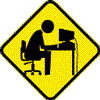The whole NTFS vs FAT32 debate confuses me though, can anyone tell me if you can have both FAT32 and NTFS file systmes on the same PC running XP??
EXTERNAL HARDDRIVE NOT DETECTED
#16

 Posted 25 October 2010 - 03:23 AM
Posted 25 October 2010 - 03:23 AM

The whole NTFS vs FAT32 debate confuses me though, can anyone tell me if you can have both FAT32 and NTFS file systmes on the same PC running XP??
#17

 Posted 25 October 2010 - 03:27 AM
Posted 25 October 2010 - 03:27 AM

It should have been a simple case of plug and play but that is not the case. There is supposed to be an auto run setup but it does not work on my pc.
#18

 Posted 25 October 2010 - 03:32 PM
Posted 25 October 2010 - 03:32 PM

what you can do is what i always do.(i work with hdd's so i run in to this problem pretty often
right click my computer go to manage
then select disk management
[attachment=45539:untitled.JPG]
then select Delete partition.
[attachment=45540:untitled1.JPG]
then you have this screen right click on the unallocated and select new partition.
[attachment=45541:untitled2.JPG]
in the wizard that pops up select primary partition.
set the size you wanted (default is the full drive size if you want more partitions change it to the size you want it in)
assign a letter to it i normally do E: or F:
then in the next window you can give the drive a name and select how you want to format it i would keep it like it is and not check the box with perform a quick format and then click finish
it might take a while for you drive to show up in my computer because its formatting.
#19

 Posted 25 October 2010 - 04:08 PM
Posted 25 October 2010 - 04:08 PM

I believe that Fat can not see NTFS, but NTFS can see FAT32.
So if the computer/laptop is Fat32 that could be your problem.
How is the computer that can see it formatted? NTFS or Fat32?
#20

 Posted 25 October 2010 - 06:37 PM
Posted 25 October 2010 - 06:37 PM

I have done the following. Downloaded the file to the desktop.
Connected an enclosure vie USB to a PC running XP, containing a NTFS formatted 80GB HDD with 2 partitions.
switched on the enclosure, clicked on the desktop file.
A box opens. From the drop down list selected the larger partition, (Y, over 32GB). clicked start.
Formatted the partition in about 4 seconds.
Am able to read/write files to the NTFS and FAT32 on both partitions in windows XP.
Being a clever d!!!, i completely missed what may be the simple answer, IE format using a PC running 98. which I have in the store room.
If the above does not work for you, let me know, and I will dig it out and give it a go.
#21

 Posted 25 October 2010 - 07:38 PM
Posted 25 October 2010 - 07:38 PM

You can try FDISK from a floppy (if you have a floppy drive), but need to be careful you get the correct drive.
You can also convert your main drive to NTFS (see quote below), provided you do not have a specific reason it is formatted Fat32.
The following taken from Elder Geek. Fat32 or NTFS
NTFS volumes are not recognized by Windows 95/98/Me.
FAT and FAT32 volumes can be converted to NTFS volumes. NTFS cannot be converted to FAT32 without reformatting.
In Windows XP, the maximum partition size that can be created using FAT32 is 32GB. This increases to 16TB (terabytes) using NTFS.
FAT32 drives are much more susceptible to disk errors.
NTFS volumes have the ability to recover from errors more readily than similar FAT32 volumes.
Log files are created under NTFS which can be used for automatic file system repairs.
NTFS supports dynamic cluster remapping for bad sectors and prevent them from being used in the future.
FAT and FAT32 volumes can be converted to NTFS volumes. NTFS cannot be converted to FAT32 without reformatting.
Similar Topics
0 user(s) are reading this topic
0 members, 0 guests, 0 anonymous users
As Featured On:















 Sign In
Sign In Create Account
Create Account

